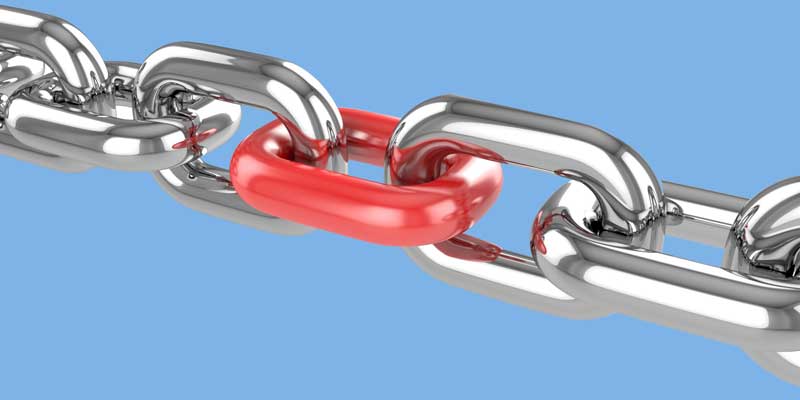Schedule a Call Back
How to create a resilient supply chain
 Articles
Articles- Mar 01,24

Authors David and Edith Simchi Levi published an early article on resilient supply chains in the HBR (Harvard Business Review) in June 2020. They recommended mapping of the supply chain, conducting stress tests, identifying bottlenecks and then drive towards the solutions. Major solutions included shifting manufacturing from China, creating more facilities in other countries (what has now become the China +1 policy), reshoring, and the like. As this was written in the covid era, the focus was on the immediate – how to get safely out of the stranglehold of the ‘supply disruptions’ caused by covid. Since then, three years have passed and much has happened. The idea of China +1 has caught on, and things are moving quite fast in this direction. Vietnam, Malaysia, and India have been the major beneficiaries. This is likely to continue for some more time. However, this is a myopic view, and needs to be expanded to consider the way ‘resilient supply chains (RSC)’ should be built in the future. Let’s examine the various dimensions of this response.
To begin with, one needs to appreciate that the ‘supply chain’ is now an inclusive term. While Porter introduced the concept of a ‘organisational value chain’, which included all the departments of a company working together, he showed the supply chain as representing the external suppliers and vendors who vend parts, components, raw materials to the company, which then converts all these into value added outputs, sold in the market (refer Figure 1).
Figure 1: Porter Value Chain diagram
The traditional view of a supply chain is represented in the Porter Value Chain diagram as ‘Procurement + Inbound Logistics’. However, in the current scenario, the ‘supply chain’ has morphed into a larger entity, encompassing the value creation processes, and the products/services distribution processes as well, in addition to the suppliers and vendors. This is a much broader way of looking at the supply chain and suits the current reality of business. With heightened competition, an organisation needs to marshal all its resources and activities, create a holistic alignment, and integrate itself with the markets and suppliers, so that, its responses to both these entities are swift and speedy. Clearly, this is a new way of looking at the supply chain and has several implications on the issue of creating an RSC.Let’s first look at the modern ‘Integrated Supply Chain Value Diagram (ISCVD)’, see the Figure 2 showing the three centres of the ISC.
The three centres of a modern supply chain need to work together in unison to create value as desired by the markets. Resilience applies to each of these centres, and not just to the ‘Vendors and Suppliers’ centre only, as has been the implicit assumption of David and Edith Simchi. Disruption can occur anywhere. For example, take the disruptions caused by the ship ‘Greenpeace’ getting stuck in the Suez Canal. Or the more recent events in the Red Sea due to the increasing attacks by pirates and Houthis. These events disrupted the front end of the Integrated Supply Chain (ISC). Some years back, the floods due to inclement weather in South East Asia caused the value creating centre to suspend its operations. This is a central disruption, so to say. And, the Covid, disrupted the back end of the ISC. Any discussion on resilience must be inclusive and consider the ISC for lasting solutions. There are many implications of this approach.
First, in view of the turbulence caused due to different conflicts between countries, the uncertainty of the availability of the transportation waterways and other channels (including airways, with the recent issue of the ‘opening doors’ of the Boeing 737), and road closures due to land slippage/ landslides, the front end of the ICS can develop bottlenecks, seriously disrupting the supply to waiting customers. Second, power outages, natural calamities, water shortages, employees’ absenteeism, etc. disrupt the central part of the ISC – the value creation centre. Third, which has dominated the resilience concerns, has been the disruptions in the back end of the ISC. Thus, resilience applies equally to each of the centres.
This increases and enhances the scope of resilience discussions. Mere reshoring may not be the full answer to the US concerns in keeping their manufacturing activities going, as the occurrences in the Red Sea may put paid to customers receiving their goods in time. But for the Indian Navy, this waterway, which is currently a global hotspot, may develop into another major conflict zone. Similarly, for the last many years, several Indian companies., like the TVS group, have been supplying components to US auto companies. Now, these companies will find it difficult to transport to the US through the Red Sea. While the back-end centre for US auto companies is the problem area, TVS group companies have a disruption in their front end. It is clear that, due to the connected nature of the ISC, a problem in the front end of one company, can create a problem in the back end of another, and so on.
Thus, if a company wants to design an RSC, then the ISC way of looking at the holistic picture would be very useful. Let’s see how this view can help.
The whole issue of resilience has developed because of two reasons. First, the root cause, is the indiscriminate and short-sighted pouring of US and European investments into China, which is violative of all principles of investments. Putting all eggs into one basket is neither good for the basket nor for the chicken. But the US and EU appeared to be hell-bent on ignoring this sage advice. Second, shutting down of local capacities, along with the R&D. Fortunately, some amount of R&D was still kept in the US and EU, mainly due to the work being done in their universities, (in addition to industrial R&D), where, the educators guarded their activities against the marauding business community. The amount of mud slung on universities and colleges for making higher education ‘more expensive’ is not a joke. This is a Nelson’s eye view of education, ignoring the benefits and highlighting only the ‘problem’. Much before this El Dorado type of raids into China, professors from Harvard, Gary Pisano and Willy Shih, had warned of the ills of ‘offshoring American manufacturing’. They lamented the loss of R&D talents, patents and design capacities (March 2012, HBR).
Both these developments exacerbated the covid disruptions. The point was not merely that US companies could not receive supplies from China, it was also that nothing was available or could be developed in the short term (as a ‘bridging loan’) to tide over the supply loss. As a result, a ‘chain reaction’ was set off. Disruption in component supplies disabled the full capacity running of the ‘value creation’ centre, due to which, companies could not produce and dispatch goods to full capacity, leading to a vicious cycle of a downward spiral. This was a catastrophic development, but many pundits saw it only as a ‘supply chain’ issue, meaning, only the back-end centre had been affected. Ignoring the effects of the other two centres is a serious gap, and could lead to sub optimal solutions.
So, what are the solutions? If we compare the ISC to a human body, any malaise in the body should be treated, keeping in mind the side effects of the prescribed medicines. Steroid based medicines can strengthen the body, but, in the long run, they can ruin it too. A dose of medicines to fight cancer also has the problem of destruction of good cells too, which are required to fight. Several psychotropic medicines have undesirable side effects. However, what is common is that a holistic approach is what is required. Merely appointing more suppliers will only lead to the situation prevalent in the 1980’s and 90’s, when the US auto industry purchased components and parts form many suppliers, as a policy to keep costs down.
Each supplier would compete with a host of other suppliers, and reduce the supply price, so that they can continue to receive orders. Toyota changed this policy to ‘either one or two dedicated’ suppliers. To make this policy work, the company invested into the suppliers, and appointed sensei to ensure high quality, controlled cost production, to create win-win situations for both, buyer and seller, using lean management techniques. However, these policies need to be re-examined, to create a holistic solution, to create an RSC.
(This is the First article of 3-Part series column)
About the author:
R Jayaraman is the Head, Capstone Projects, at Bhavan's S P Jain Institute of Management & Research (SPJIMR). He has worked in several capacities, including Tata Steel, for over 30 years. He has authored over 60 papers in academic and techno economic journals in India and abroad. Jayaraman is a qualified and trained Malcolm Baldrige and EFQM Business Model Lead Assessor.
Related Stories

Waste pooling collaboratives for profitable circular economy
Waste reduction is one of the key steps towards sustainability. Companies opt for recycle, reuse and refurbish waste to create value. Here, R Jayaraman explains the concept of waste pooling collabor..
Read more
India: An emerging manufacturing hub
The contribution of the ‘industry’ sector – which includes manufacturing, mining and quarrying and allied industries – has been consistently around 25 to 30 percent in the last ten years, sa..
Read more
An integrated approach to create a resilient supply chain
In this concluding article of the 3-part series, R Jayaraman explains the importance of adopting an integrated approach for creating a resilient supply chain (RSC).
Read more













